We had asked for smaller breakfasts so the dogs (who get the leftovers) would not have been as keen on us today. Sue was in for a busy day as she had a lot of roast dinners to cook at the shop at lunchtime as she had 25 guests coming, including a group from the Women's Institute. She also said she could put some washing on for us as long as we could wait until 5pm as she had to work today with only 1 staff member. Later her husband (Brian) told us he was unpopular as he had suggested a drive to a certain spot to walk the dogs, but the river was up so they couldn’t cross. She was concerned she might not get back in time to cook us breakfast!!
Brian also talked to us about his visit to Normandy and his life during the war
. He was a young boy living a bit out of London so was not evacuated. He said a lot of the bombing was exciting for him. He did say one evening his father had been standing at the front door watching the activity then had just moved into the house when a large piece of shrapnel flew through the door at head height. He also remembered a bomb landing just as his Grandmother bought breakfast into the Anderson shelter and her dropping the tray. His closest escape had been when visiting a friend. The friend’s mother grabbed him and her son and dived under a table just as a doodle-bug bomb landed. The walls stayed up but all windows blew in and the house lost its chimney pot. We also had a chat to the people double booked with us who we going to a National Trust house for a visit and a walk in the grounds.
We were in no rush because we were going to visit Poltimore House and we read it opens between 11am and 4pm. In fact, Sue had had an ad for a Falconry Day which had been held there last weekend. Jennifer had stayed here when the then owner, Lady Stuckly, was still alive and she was able to help with family history. It is not far from the village we are staying in so it was only a short trip to the village of Poltimore. (edit Jennifer stayed with Lady Stuckly but not here we found later)
The hardest part was to find Poltimore House. We could see ads for a fete to be held there but not the house
. We went through the village then turned and saw a large building in the fields. From this direction we could then see the sign. However, the road in had a shut gate and there was no sign of life. This was a puzzle because the web site had indicated the place would be open, although it hadn’t mentioned which days. We had assumed Sunday at least would be one.
There was a house by the gate so John went in to see if the owner could help. He said the House is only open when the 'Friends of Poltimore House’ had an activity and we were either side of weekends when activities were on. There is a campaign to raise money to reslate the roof and we gathered the inside was not in the best of conditions. It was a shame as visiting here was part of the reason for staying in the area. However we did take a photo from a distance and we now know there is a website for the property.
We found a cache at a local site called The Daycaster. It is obviously a controversial piece of public art
. We were told the local name which seemed to fit better, ‘the Bike Rack’. The total cost of The Daycaster was £140,000. It sits at the side of a ‘Park and Ride’ which is an odd place as well.
We made our way back to Exeter and looked for a pub with wifi. We ate at the Farmer’s Union and found it had an interesting background. There had been a pub in the building in 1905 as it featured on a postcard of the day. Over the years various pubs had operated here with different names. We were in the student area which was obvious when we passed a local statue – with a cone on the head.
We looked in the Heritage Pass book and decided to head to Torquay to visit Kents Cavern Prehistoric Caves. The book said that it is England’s oldest recognised human dwelling and a Gateway site for a UNESCO geopark. It sounded a bit different and would not be weather dependent. The forecast had been for unsettled weather.
We had to find the site the old fashioned way by following road signs because we had only Torquay as an address
. The last sign said we were also near Gleneagles which was the original hotel that Fawlty Towers was based around. We were tempted but didn’t get sidetracked.
The Kent Cavern site was more touristy than we were expecting. However the attendant told us that they often have people visiting with the passes and in fact we were the second set for the day. We went through in a group that had a number of family groups. The guide was very good at involving the children while still giving information. It is the first time I have been in caves and been allowed to touch the walls, with only one group of stalactites protected behind glass.
We heard about the discovery and excavation of the caves. The main part filled with mud over many centuries. It is known that Romans had been in the cave because there was a wall piece that looked much like a face that had Roman coins placed beneath it, presumably to appease any spirits. The excavators included a William Petre who left his name on a wall with the date, 1571
. The early explorers found odd bits of bone, pottery and flint.
The first serious excavation was done by an Irish Priest, John Macenery. In 1825 he heard about the cave and started exploring. Over years he found many animal remains and flint tools. However, his findings were suppressed because they contradicted the recognised religious and scientific theories of the day.
The main excavations were done by William Pengally from 1865 to 1880. In fact he employed others to do a lot of the actual work but his name is attached to the finding of over 80 000 items. This is because he did a very systematic excavation and kept all the findings in numbered grids based on position and depth. This proved to be vitally important when finding the relative ages of the objects.
It has been shown that the caves were used by a herd of hyenas for shelter. They have also found the route that bears took when hibernating
. They would have squeezed through some narrow passages into a big cave. The guide turned off all the lights so we could see what it would have been like. She had advised the children to find big people first. It was done very well as she showed us how a light could be made with a scallop shell and dry moss. Animal fat would drip onto this to keep the flame going. She lit three then turned off the main lights so we could see how effective they are. Then she doused the lights one by one. Even one gave a surprising amount of light.
The human remains had been found nearer to the cave entrance. We were shown a couple of replica skulls although it was not clear if the originals had been found in the cave, however flint tools definitely had. It was pointed out that the flint was not found in the immediate area so the people must have moved around.
We then went to visit a couple of South Devon villages but moved straight on as there was no place to park
. We found a river side town (that was a bit bigger) and had a better look there. There was a spot that gave lovely views and we also found a rather odd botanical gardens. There seemed to be little in the way of plants but there were some sculptures made of waste that seemed to be part of a local project. There were also the ruins of an odd building. I would like to have known its history.
The weather then started to deteriorate so we headed back to Exeter. We had a meal by the river Exe in an old mill before returning to the BnB.
Update.
We had an email from Jennifer which told us
I see you have tried to visit Poltimore. I need to correct one thing in your Blog, I only saw Poltimore at a distance as it was not open to the public.
We stayed with Lady Stuckley in Hartland Abbey, up in the north of Devon
. Poltimore was her childhood home, but Hartland was her husband's secondary residence. We also visited one of her daughters at North Molton, which also had Baumfield estates. There is a great tomb at the latter and also at one of interest at St Mary's in Poltimore village. Robert took photos of both.
The fact that I was unable to go into Poltimore itself was unfortunate as it was the Baumfields/Bampfyldes principle residence for a few hundred years (it has been used as a school and hospital since sold).
The annoying extra is that we were near Harland Abbey the next day but, because we did not have internet access in Devon we did not know of this connection until we were in Chichestor.
Visiting the rellies in Kents Caves
Sunday, August 22, 2010
 Brampford Speke, England, United Kingdom
Brampford Speke, England, United Kingdom
Other Entries
-
79Off to the Wash
Aug 0517 days prior Dersingham, United Kingdomphoto_camera12videocam 0comment 0
Dersingham, United Kingdomphoto_camera12videocam 0comment 0 -
80Blickling Hall
Aug 0616 days prior Dersingham, United Kingdomphoto_camera18videocam 0comment 0
Dersingham, United Kingdomphoto_camera18videocam 0comment 0 -
81A quick visit to Liz's place
Aug 0715 days prior Dersingham, United Kingdomphoto_camera17videocam 0comment 0
Dersingham, United Kingdomphoto_camera17videocam 0comment 0 -
82Kings and castles
Aug 0814 days prior Dersingham, United Kingdomphoto_camera14videocam 0comment 0
Dersingham, United Kingdomphoto_camera14videocam 0comment 0 -
83Beautiful Whitby
Aug 0913 days prior Whitby, United Kingdomphoto_camera23videocam 0comment 1
Whitby, United Kingdomphoto_camera23videocam 0comment 1 -
84On the prowl at Whitby
Aug 1012 days prior Whitby, United Kingdomphoto_camera13videocam 0comment 0
Whitby, United Kingdomphoto_camera13videocam 0comment 0 -
85Rob Roy territory
Aug 1111 days prior Lochearnhead, United Kingdomphoto_camera11videocam 0comment 0
Lochearnhead, United Kingdomphoto_camera11videocam 0comment 0 -
86'By yon bonnie banks'
Aug 1210 days prior Inverness, United Kingdomphoto_camera17videocam 0comment 0
Inverness, United Kingdomphoto_camera17videocam 0comment 0 -
87To the top at John O'Groat's
Aug 139 days prior Inverness, United Kingdomphoto_camera13videocam 0comment 0
Inverness, United Kingdomphoto_camera13videocam 0comment 0 -
88Dawdling down to Dumfries
Aug 148 days prior Dumfries, United Kingdomphoto_camera14videocam 0comment 0
Dumfries, United Kingdomphoto_camera14videocam 0comment 0 -
89A visit to wee Robbie
Aug 157 days prior Dumfries, United Kingdomphoto_camera22videocam 0comment 0
Dumfries, United Kingdomphoto_camera22videocam 0comment 0 -
90Off to see cookie bear
Aug 166 days prior Shrewsbury, United Kingdomphoto_camera8videocam 0comment 0
Shrewsbury, United Kingdomphoto_camera8videocam 0comment 0 -
91Hanging out with Sabrina
Aug 175 days prior Shrewsbury, United Kingdomphoto_camera20videocam 0comment 0
Shrewsbury, United Kingdomphoto_camera20videocam 0comment 0 -
92Welcome to Wales boyo
Aug 184 days prior Cardiff, United Kingdomphoto_camera9videocam 0comment 0
Cardiff, United Kingdomphoto_camera9videocam 0comment 0 -
93Wales in the wet
Aug 193 days prior Cardiff, United Kingdomphoto_camera5videocam 0comment 1
Cardiff, United Kingdomphoto_camera5videocam 0comment 1 -
94Cardiff Castle to Barnhill Cottage
Aug 202 days prior Brampford Speke, United Kingdomphoto_camera16videocam 0comment 1
Brampford Speke, United Kingdomphoto_camera16videocam 0comment 1 -
95The Black Adderrrr....
Aug 211 day prior Brampford Speke, United Kingdomphoto_camera7videocam 0comment 0
Brampford Speke, United Kingdomphoto_camera7videocam 0comment 0 -
96Visiting the rellies in Kents Caves
Aug 22 Brampford Speke, United Kingdomphoto_camera12videocam 0comment 0
Brampford Speke, United Kingdomphoto_camera12videocam 0comment 0 -
97Moor travels
Aug 231 day later Brampford Speke, United Kingdomphoto_camera14videocam 0comment 0
Brampford Speke, United Kingdomphoto_camera14videocam 0comment 0 -
98Motoring to Bealieu
Aug 242 days later Chichester, United Kingdomphoto_camera10videocam 0comment 1
Chichester, United Kingdomphoto_camera10videocam 0comment 1 -
991066 and all that
Aug 253 days later Chichester, United Kingdomphoto_camera3videocam 0comment 0
Chichester, United Kingdomphoto_camera3videocam 0comment 0 -
100Catching up with Chalky and Pam
Aug 264 days later Chichester, United Kingdomphoto_camera16videocam 0comment 0
Chichester, United Kingdomphoto_camera16videocam 0comment 0 -
101Visiting Leeds Castle
Aug 275 days later Chichester, United Kingdomphoto_camera10videocam 0comment 0
Chichester, United Kingdomphoto_camera10videocam 0comment 0 -
102Chichester to Winchester to London
Aug 286 days later London, United Kingdomphoto_camera26videocam 0comment 0
London, United Kingdomphoto_camera26videocam 0comment 0 -
103Fast cars, a Palace and treacle
Aug 297 days later London, United Kingdomphoto_camera6videocam 0comment 0
London, United Kingdomphoto_camera6videocam 0comment 0 -
104Cruising down the River
Aug 308 days later London, United Kingdomphoto_camera11videocam 0comment 0
London, United Kingdomphoto_camera11videocam 0comment 0 -
105There'll be blue birds over......
Aug 319 days later London, United Kingdomphoto_camera22videocam 0comment 0
London, United Kingdomphoto_camera22videocam 0comment 0 -
106To Ireland begorrah...
Sep 0110 days later Ballymacaw, Irelandphoto_camera2videocam 0comment 0
Ballymacaw, Irelandphoto_camera2videocam 0comment 0 -
107A fox on the run
Sep 0211 days later Ballymacaw, Irelandphoto_camera3videocam 0comment 0
Ballymacaw, Irelandphoto_camera3videocam 0comment 0 -
108Cuisin' the Copper Coast
Sep 0312 days later Ballymacaw, Irelandphoto_camera6videocam 0comment 0
Ballymacaw, Irelandphoto_camera6videocam 0comment 0 -
109Quick note to everyone re earthquake
Sep 0413 days later Ballymacaw, Irelandphoto_camera0videocam 0comment 1
Ballymacaw, Irelandphoto_camera0videocam 0comment 1 -
110A shaky start
Sep 0413 days later Ballymacaw, Irelandphoto_camera6videocam 0comment 0
Ballymacaw, Irelandphoto_camera6videocam 0comment 0 -
111From Famine ships to hurling
Sep 0514 days later Ballymacaw, Irelandphoto_camera4videocam 0comment 0
Ballymacaw, Irelandphoto_camera4videocam 0comment 0 -
112By Hook or by Crooke
Sep 0615 days later Ballymacaw, Irelandphoto_camera14videocam 0comment 0
Ballymacaw, Irelandphoto_camera14videocam 0comment 0 -
113It's a long way...
Sep 0716 days later Ballymacaw, Irelandphoto_camera17videocam 0comment 0
Ballymacaw, Irelandphoto_camera17videocam 0comment 0 -
114Wandering about Wexford
Sep 0817 days later Ballymacaw, Irelandphoto_camera15videocam 0comment 0
Ballymacaw, Irelandphoto_camera15videocam 0comment 0

 Brampford Speke, England, United Kingdom
Brampford Speke, England, United Kingdom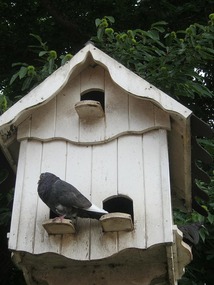
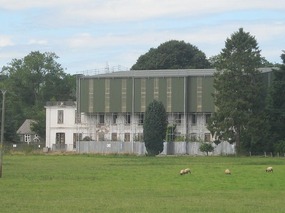

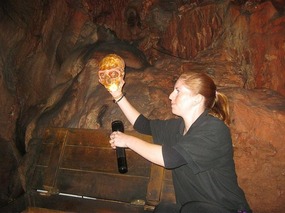
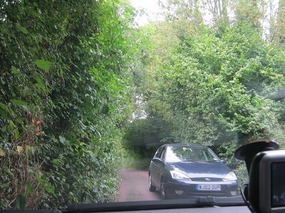
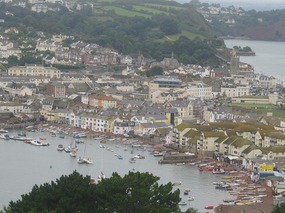
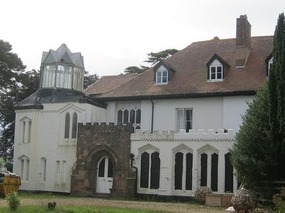
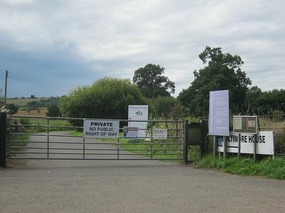


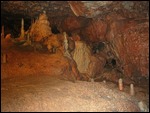
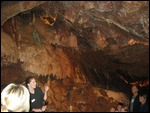
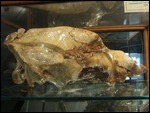
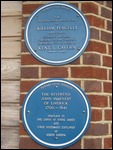
2025-05-22